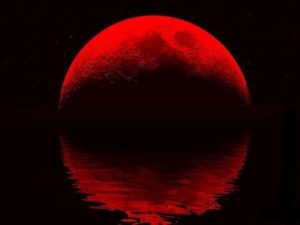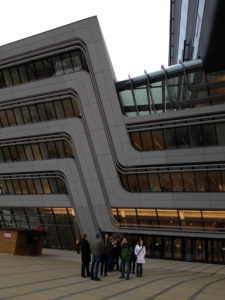Until the shocks to the world system in the past decade following the turn of the millennium – e.g., the attack on the World Trade Center in 2001, the global financial collapse of 2008 – the “postmodern era” was supposed to be a kind of immense carnival of peoples reveling in a new global prosperity, the giddy prospects of emerging democracy, and a spirit of cultural inclusion never experienced before.
Now, in this strange twilight of the planetary neo-liberal era, we are starting to wonder if “pomo” wasn’t more pollyannish than we are yet willing yet to admit.
Sputtering economic growth and runaway income inequality in the past seven years, revelations of massive intrusions by so-called “liberal” governments into people’s lives, the collapse of the “Arab Spring” into brutal dictatorships, and the malignant tribalism and militarized nationalism we are witnessing from the Middle East to Eastern Europe – all are disturbing signals once more of what Heidegger between the two great wars termed the “darkening of the world.”
 Globalization no longer seems a friendly behemoth on which to ride triumphantly into what Fukuyama once proclaimed as “the end of history”, but a hydra-headed monster that , in storming through the streets of the world’s great cities, arouses once again the feeling of what James Joyce dubbed the “terror of history.”
Globalization no longer seems a friendly behemoth on which to ride triumphantly into what Fukuyama once proclaimed as “the end of history”, but a hydra-headed monster that , in storming through the streets of the world’s great cities, arouses once again the feeling of what James Joyce dubbed the “terror of history.”
As I compose this post on the night of the so-called “blood moon”, which both in Biblical tradition and popular prophecy signifies apocalyptic bodings of different degrees, it is not difficult to imagine that contemporary history itself is now unveiling itself as William Butler Yeats’ “rough beast” suddenly disclosing its true colors while menacingly “slouching toward Jerusalem.”
Eschatological musings aside, it is clear we have transitioned from an age of promise to an age of crisis. And in an age of crisis theological thinking itself must don its own “prophetic” vestments and become a critical theology.
The notion of a critical theology today is not something totally unprecedented. During the 1920s and 1930s with the memory of the catastrophe of the First World War and the lowering specter of economic depression and fascism focusing everyone’s attention, Karl Barth and Emil Brunner proclaimed the tenets of a movement known as “theology of crisis”, later renamed neo-Orthodoxy.
The theology of crisis challenged with a bold, no-holds-barred , and uncompromising polemic the socially meliorative and culturally accomodative strategies of Protestant liberalism, which had prevailed for many generations. Its message centered for the most part on the futility of incorporating the latest intellectual fashions “into the church” and reminded its readers routinely that Christianity is not the crenellated redoubts of “religion”, but the lonely watchtower of faith, which is the only honest stance we can adopt when we see everywhere the fixed stars of theoretical certainty falling from the sky.
Meanwhile, in Europe’s secular intellectual circles, particularly among Jewish modernist and Marxist radicals, the mood of crisis inspired a complete rethinking of methods of social analysis and political activism. Dogmatic Marxism gave way to a more serious interest in the symbol-production and meaning-structures of mass society – what in neo-Hegelian terminology had come to be known as the “cultural sciences” (geistliche Wissenschaften).
Calling themselves “critical theorists,” figures such as Horkheimer, Adorno, and later Marcuse and Habermas, forged a new understanding of how the plastic powers of rationality can become effective instruments for comprehending the complexities of the historical crisis that was swirling around them.
Marxism itself turned “cultural.” But what the original critical theorists lacked was any serious insight into how the argument from faith along with theological critique could become a bona fide type of discourse for addressing the sense of crisis.
Since about 2000 , on the other hand, we have witnessed the slow chrysalis from the pupa of French postmodernist philosophy what is being called a revival of critical theory, which has tremendous implications for theological inquiry in the coming decades, what I have already written about here and there and designated the theological future beyond the future.
We must dub it a new critical theology for an age of crisis. A critical theology amounts to strategic the deployment of the new critical theory in a global and theoretical context to the age of crisis, which ultimately turns out to be a faith-crisis (and not in the hackneyed sense at all). It will be both Biblical and political in an unthought way, calling to task and summoning to a new style of authenticity even our numerous present-day versions of “radical theology.”
Critical theology will draw on many of the most incisive and compelling trends in both Continental philosophy and Continental theology, not to mention the critical perspectives of political economists, globalization theorists, and reflective and engaged social activists.
I am at the behest of a major publisher beginning to work on a book on the new critical theology, and I invite whoever has the time or interest to join me in a course I will be teaching simultaneously and online at a site in Denver, Colorado with the New Global Center for Advanced Studies.
As Dante Alighieri so passiontaely put it, “the darkest places in hell are reserved for those who maintain their neutrality in a time of crisis.” On this eve of the blood moon, famously taken from the imagery of the ancient Hebrew prophet Joel in anticipation of the “pouring out of the spirit” on all flesh, we are reminded that Hegelian historical Geist is more than a literary metaphor.
It is the force of God that sustains faith and drives history – in every age of crisis!
Carl Raschke is Professor of Religious Studies at the University of Denver and author of many books, including The Next Reformation (Baker Academic, 2004), GloboChrist (Baker Academic, 2008), and Postmodernism and The Revolution in Religious Theory (University of Viriginia Press, 2012). He is senior editor for the Journal for Cultural and Religious Theory and co-founder of the Global Art & Ideas Nexus as well as adjunct faculty at the Global Center for Advanced Studies, based in Grand Rapids, Michigan.